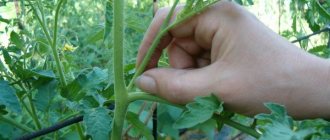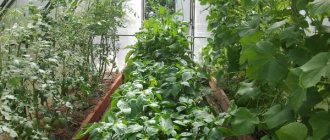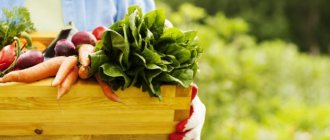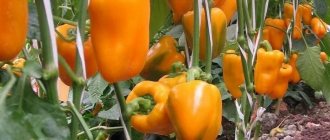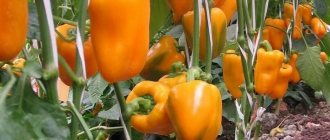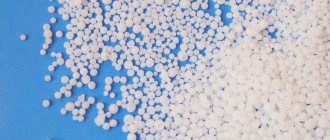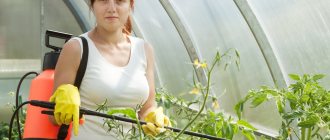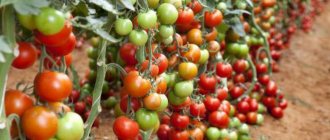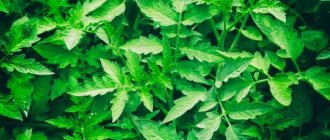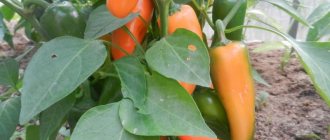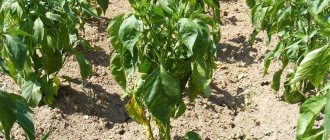Forming tomatoes, or pinching, as the technique is more often called by people, is the most important agrotechnical technique, without which it is almost impossible to grow a good harvest. Only certain varieties of super early tomatoes do without pinching.
Even the absence of fertilizing may have less impact on yield than uncontrolled growth of the bush. But even when pinching, you cannot do without knowledge of the characteristics of the variety, methods, formation schemes and certain rules.
Why form a tomato bush?
The main part of tomato varieties has the physiological ability to form lateral shoots in almost every axil, on which, in turn, new ones grow. The growth and expansion of the bush occurs in geometric progression.
Such growth in a short time turns the bush into a pile of green mass. While there may be a lot of flowers on it, the ovaries are unlikely to be numerous. In order for full-fledged fruit clusters to form, the plant will need a lot of nutrition and light.
The plant does not have enough strength for the simultaneous intensive growth of green mass, development and ripening of fruits. An agrotechnical technique that significantly improves the condition of the bush and increases productivity is formation. This is an artificial regulation of the number of shoots to create favorable conditions for fruiting of the bush.
Removing the lower leaves
The next important step in the formation of tomatoes is to remove the lower leaves.
. This must be done to improve the ventilation of the bushes, and so that all nutrients flow directly to the fruits, rather than feeding branches with leaves.
It is necessary to gradually, no more than 2-3 leaves per week, remove all branches down to the cluster on which the fruits begin to ripen.
Advantages and disadvantages of forming tomatoes into 2 stems
Quite often, two stems are left for fruiting, which become almost equivalent, like a mirror image of each other. Medium-sized indeterminate and almost all determinate varieties can be formed into two stems. The exception is standard varieties that do not produce side shoots. This formation allows:
- get an early harvest from the first clusters;
- increase the number of fruit clusters in varieties with limited growth;
- effectively use the area of low protective structures.
Among the disadvantages:
- Each of the shoots needs a garter;
- the danger of stems breaking under the weight of the crop at the site where the second shoot grows;
- shade increases with double the number of leaves.
General rules and scheme for forming a bush with two stems
When to start
There are two common methods for growing two stems with one root system:
- The most common method is in which the first pinching is carried out 10-14 days after planting the seedlings in the ground.
Plants planted in the ground quickly acclimatize, and the seedling will have its first cluster of flowers. Active growth of shoots begins. If you are late in planting the seedlings, the first cluster may appear already in the pot, then pinching begins immediately after the seedlings have taken root.
A healthy stepson is left in the leaf axil below the flower raceme and cared for in the same way as the main stem. Over time, both stems will become equal, and new shoots will appear in the axils of the leaves that need to be removed.
- The second method is to form a bush at the stage of seedling production.
It is called the early pinching method. The top of the seedling is pinched after the second true leaf, then equivalent shoots will appear in the axil of the first and second leaves, from which two trunks will develop. It is believed that this method is less damaging to the plant. On the other hand, at an early stage it is difficult to predict whether these shoots will be healthy and of high quality.
How to stepchild
In order not to harm the plant, pinching work must be carried out in compliance with certain rules:
- Plants must be dry, without dew, so that moisture does not introduce infection into the wounds. In this regard, the plants are not fed on the eve of pinching.
- The work is carried out in dry weather at moderate air temperatures.
- The best time for pinching is in the morning, when the shoots are juicier and break easily.
- The optimal shoot size for removal is up to 5 cm. Overgrown shoots overload the plants, and when they are removed, the stem may be injured. Such shoots need to be cut out with a knife.
- The main method of stepsoning is breaking out the stepson manually. To do this, take it to the side, holding it with your fingers, and press it down with a little effort. If the plant is not withered, the stepson will break off very easily.
- To prevent a new one from growing in the leaf axil after removing one shoot, it is necessary to leave a small stump when breaking off, which will give the plant a signal that the place is occupied.
Attention! Plants that show signs of disease are pruned last, disinfecting the knife and hands after each bush.
To prevent shoots from overgrowing, bushes must be inspected weekly.
When and how to pinch
The next step in forming a bush is pinching the growth point. If the bush was formed into two stems from which all shoots were removed, then there are two such points.
Some varieties with limited growth may not need to be topped. It all depends on the timing of the growing season, the development of the plant, the place where it is grown and weather conditions.
Pinching the growing point helps mobilize the plant to set fruit and ripen it. The growth point is not pinched immediately above the flower brush, but 2-3 leaves after it. This will improve the plant's photosynthesis.
Important! Pinching of the growing point is carried out after the flowers of the last inflorescence open.
Removing leaves
In parallel with breaking off the stepsons, the leaves below the fruit clusters are removed. No more than 2 healthy leaves are removed from each stem at a time. Diseased leaves are removed first.
Carrying out stepsoning
Removal of stepsons is usually achieved by hand without the use of a cutting tool. When using knives, there is a risk of transferring infection from one bush to another and causing a wound at the cut site. However, with a large greenhouse farm it is impossible to do without tools. In principle, you can cut off the stepsons, but with precautions.
Before growing tomatoes in a greenhouse (step by step) by cutting, you need to remember the following:
- The tool is sharpened to a razor sharp state.
- The cutting part is disinfected with a solution of bleach or potassium permanganate.
- With a quick and precise movement, the stepson is cut at a distance of 10-15 mm from the base, without damaging the main branch.
- All the shoots on one bush are cut off, and the removed stems are immediately placed in a separate container and taken out of the greenhouse, which avoids rotting and the spread of infection.
- New instrument disinfection is necessary. This operation is carried out every time you move to a new bush.
When providing the necessary care for tomatoes, it is important to clearly distinguish the stepson from the fruiting stem. The following are the most important differences:
- leaves are immediately noticeable on the stepson, while flower ovaries are visible on the stem;
- the stepson grows from the leaf axil, and the fruiting vine branches only from the stem;
- the most obvious difference is when the length of the stepson is about 4-5 cm.
Pinching is rightly considered an important agrotechnical measure when growing tomatoes both in greenhouses and in the garden. This simple but painstaking work requires extreme care and caution, but the stepson tomato produces a bountiful harvest and tasty, full-fledged fruits.
Features of the formation of a bush with 2 stems
In the greenhouse
Tall tomatoes, both determinate and with limited growth, are often planted in the greenhouse. They are formed into 1 or 2 stems. The principles of pinching for organizing two stems are general. When planting, you need to take into account that you need twice as much food and space for two stems and they need to be tied up separately. In order for all the clusters to set fruit and ripen during the growing season, you need to pinch the growth point in a timely manner.
In the open ground
Preference is given to low-growing and medium-growing tomato varieties. In a short growing season, you need to get the maximum yield, so forming two or three stems is an effective technique. At the same time, in low-growing varieties the top is not pinched, but in medium-growing varieties the decision about pinching is made depending on the condition of the plant and weather conditions.
Basic care
Growing tomatoes indoors is impossible without a garter. Moreover, both varieties with small and varieties with large fruits need it. Throughout the life of the plant, it should be secured with twine to a trellis or other support.
Of course, you can’t do without fertilizing. It should be taken into account that for normal growth and fruiting, tomatoes need to receive potassium, nitrogen and phosphorus.
Tying up a tomato
Tomatoes need sufficient heat and light. The temperature in the greenhouse should be +24..+31°C, and the duration of lighting should be at least 10 hours a day. If these two regimes are not followed, tomatoes grow excessive leaves.
The formation of tomatoes in a greenhouse is one of the most important points in agricultural technology, which forces the entire plant to work on the formation of flower clusters and ovaries. As a result, there is a significant increase in yield and fruit quality.
How to properly form a trunk
- In determinate tomatoes
This is a type of bush that produces a flower cluster early (after 3-4 leaves). After another 2-3 leaves, another one appears. The distance between the following brushes is reduced. After several brushes (from 2 to 8), the growth of the plant ends (determines).
In other words, instead of a growing shoot, the last flower cluster is laid. If you remove all the shoots from the main stem, the growing season will end with only these brushes.
At the same time, a healthy plant with a developed root system is capable of more. To increase the potential, at the beginning of the growing season, the first healthy shoot is left, from which the second stem grows. It has the same functions as the main one. Caring for it is the same.
- In super-determinate or super-early tomatoes
You can prolong fruiting by leaving not the lower stepson, but the last one, located below the last brush. Other lateral processes are removed. This will give the plant the opportunity to plant 1-2 more flower clusters on this shoot. Some super-early varieties (standard) do not require formation, since they practically do not form lateral branches.
What are stepsons on tomatoes and what do they look like?
A stepson is a side shoot that grows from the axil of a tomato leaf.
There can be quite a lot of stepchildren on a plant, and they grow throughout almost the entire growing season.
In addition to the stepsons growing from the leaf axils, basal stepsons are also formed on tomatoes.
Such stepsons are the “fattest” and need to be removed first.
Recommendations for forming a bush
In order for a tomato bush to provide maximum returns, you need to choose a formation scheme that is most suitable for a particular variety and its growing conditions. To do this, you need to know exactly what variety you are growing and its physiological characteristics. Delaying the timing of pinching has a negative impact on the yield.
Forming tomato plants into 2 stems is a simple agrotechnical technique that allows you to grow a good harvest of early produce and rationally use the garden space.
